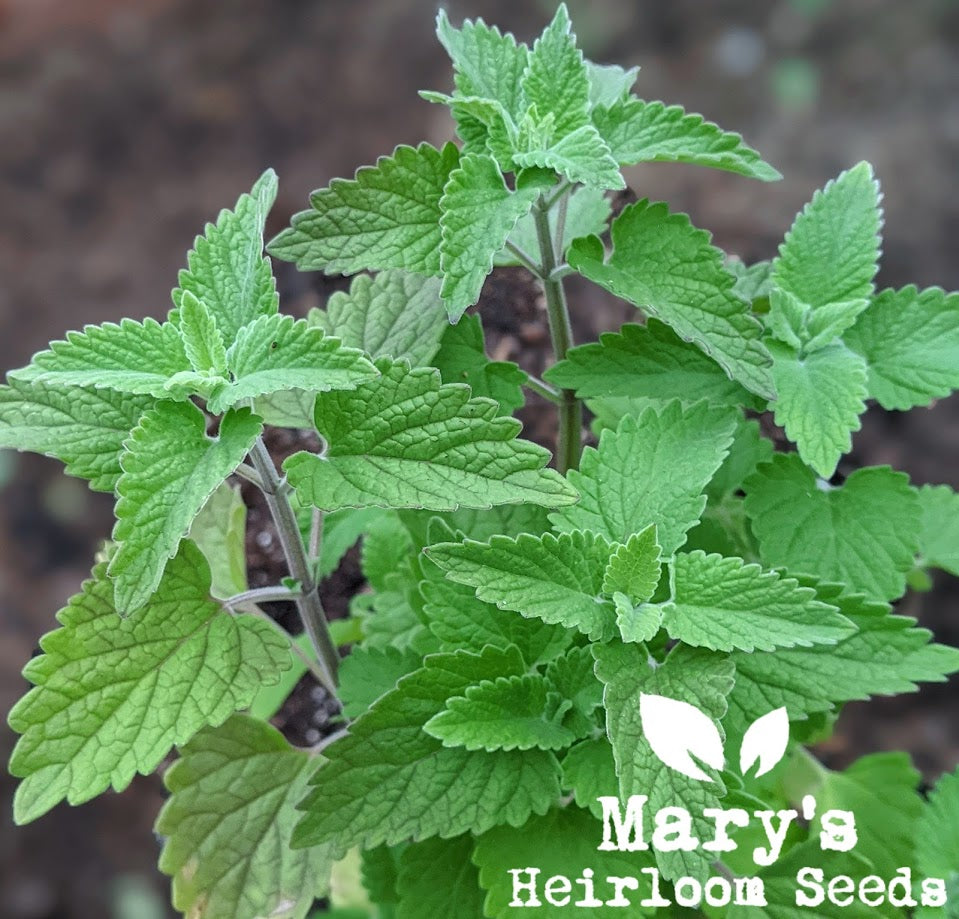Catnip, or Nepeta cataria, is a common perennial herb plant. Native to the United States, and thriving in USDA zones 3-9. Catnip is pollinator friendly and said to repel deer.
Catnip grows to a height of 3 to 4 feet and has featherlike, light green foliage and small clusters of lavender flowers that grow on spikes.
A member of the mint family, catnip is also used in food and herbal remedies. For example, tea made from the leaves and flowers of Nepeta cataria is said to relieve coughs. The oil extracted from catnip plants is even used in natural mosquito repellents. And of course, our cats LOVE Catnip!
If you don't want this perennial plant to spread in your garden, it is best to plant in containers. Catnip can easily re-seed and take over a small garden plot.
Growing Catnip from Seed
For optimal germination, stratification is recommended for Catnip seeds. We have an in depth explanation of Cold Stratification in our article The Wonder of Seeds and Germination.
For catnip, seed sowing should occur after the seeds about been placed in a freezer overnight. After this period, allow the seeds to soak in water for a period of 24 hours. This will allow for easier and more uniform germination rates.
Once the stratification process is complete, sow in seed starting trays approx 1/8 to 1/4 inch deep. Keep soil warm and moist. Seeds should germinate in 5 to 10 days.
When your plants are ready to be transplanted into the garden, it is best to harden them off for a few days prior to transplanting.
Catnip plants do best in full sun to partial shade and are drought tolerant. Catnip can be watered regularly but does not do well in soggy soil. It's a pretty low maintenance plant and does not need to plant food/fertilizer.
Harvesting Catnip
Are you harvesting for your feisty feline? The best time for picking catnip leaves is when the plants are flowering, around mid-summer. This is when the compounds that cats love most are at peak levels in the leaves. Catnip leaves should be dry when you harvest so you minimize the risks of the harvest getting moldy.
Harvest stems instead of individual leaves. Catnip will continue to produce throughout the season. Once you have harvested from your catnip plant, you can dry catnip leaves on the stems or removed the leaves to dry. Place your Catnip Leaves on a screen or drying rack in a well ventilated area away from direct sunlight.
Store your fully dried leaves in an airtight jar or container.
For tea, mix 2 teaspoons of dried catnip leaves or flowers with 1 cup of boiling water. You can make your own teabags or use a tea ball strainer. "Brew" for several minutes. Optional: Add lemon juice and honey then stir and enjoy.





1 comment
Hi, are catnip seeds real tiny? Just wondering if they’re big enough to one to a peat pellet.
Thanks
Bill